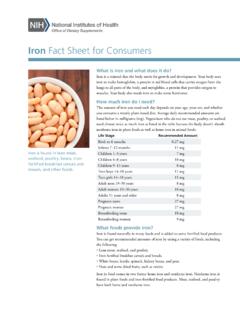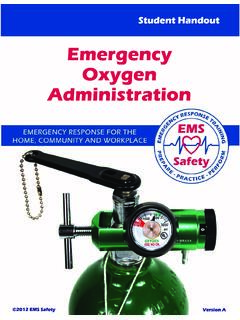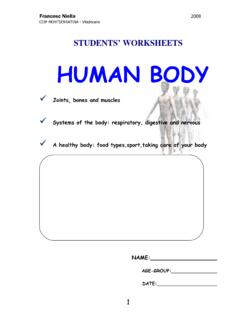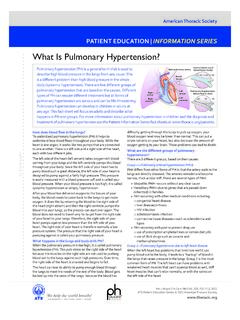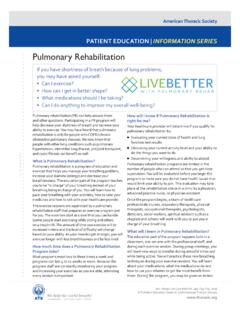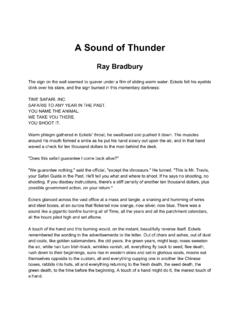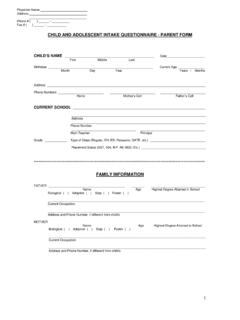Transcription of Vertebrate and Invertebrate Animal Structure Notes
1 Vertebrate and Invertebrate Animal Structure Notes (6 ) compare the characteristic structures of vertebrates and invertebrates: detect ways that these organisms are alike and different identify specific Invertebrate and Vertebrate groups based on a description of characteristics illustrate the different kinds of vertebrates and invertebrates by their distinctive differences classify an Animal into a particular group based on its Animal Kingdom is divided into 35 different phyla. These phyla can be classified into 2 groups (vertebrates/invertebrates) based on external & internal physical traits.
2 All animals share several common characteristics: o 1) Their bodies are multi cellular. o 2) They are heterotrophs (cannot make their own food) and must get their energy by eating plants or other animals. herbivores (eat plants), carnivores (eat meat), omnivores (eat plants and meat) detrivores (eat dead material)o Their major functions are to 3) obtain food and oxygen for energy, 4) keep their internal conditions in balance, 5) move, 6) reproduce (mostly sexual reproduction), and 7) remove waste Invertebrates comprise the remaining phyla of the Animal Kingdom.
3 They include sponges, segmented worms, echinoderms, mollusks, and arthropods. Invertebrates share certain characteristics: They do NOT have backbones or internal skeletons. They are more simple organisms. Some have external skeletons, called exoskeletons. Invertebrates can be classified based on their shape (symmetry). Radial symmetry: many lines of symmetry that pass through a central point (Ex. pie plates, bicycle wheels) Bilateral symmetry: One line of symmetry that splits the object in half (Ex. spoon, eyeglass) Asymmetry: not symmetrical (Ex. Lumpy clay ball)Sponges Very simple animals that have many pores (holes) through which water is filtered.
4 Water moves into a central cavity and out through a hole in the top. Sponges obtain their food and eliminate wastes through this passage of water. Filter feeders: have specialized cells for obtaining food and dissolved oxygen from the water. AsymmetricalExamples: Sponges (Barrel Sponge, Stove Pipe Sponge, Vase Sponge, Branching Tube Sponge) Cnidarians Cnidarians means stingers : use stingers to capture their prey and to defend themselves Radial symmetry Ex: jellyfish, sea anemones, corals, hydra Segmented worms Annelid name for segmented worm (anus means ring) Have long tube like bodies that are divided into segments.
5 They are the simplest organisms with a true nervous system and blood contained in vessels. A long digestive tube runs down the length of the worm s inner body. Worms take in dissolved oxygen from the water through their skin. Most are predators and decomposers. They obtain food using a mouth, then digest their food. Bilateral symmetry Ex: earthworms, leeches, seafloor worms Echinoderms means spiny skinned spines for protection Five part radial symmetry: have 5 arms that extend from the middle body outwards. A water vascular system that has fluid filled tubes that when filled act as suction cups: allows them to move, exchange carbon dioxide and oxygen, capture food, and release waste Ex: sea stars, brittle stars, sea cucumbers , sea urchins, sand dollarMollusks Have unsegmented soft bodies most have a thick muscular foot for movement, eating, or to open and close their shells.
6 Some are filter feeders. They have more developed body systems than sponges or worms. They take in oxygen through gills or lungs, and some have shells. Bilateral symmetry Ex: octopi, squid, snails, slugs (no shell), clams, oysters, scallops, cuttlefish, na utilus Arthropods Arthropod means jointed foot Have jointed legs, segmented bodies, some have wings, exoskeletons (hard outer covering), mandible jaws for chewing food They obtain oxygen from the air through gills or spiracles (air tubes) Bilateral symmetry Ex: insects (flies, ants, beetles, bees, grasshoppers), centipedes and millipedes, arachnids (spiders, ticks, scorpions), and crustaceans (lobsters, shrimp, crabs) Vertebrate AnimalsVertebrates comprise only one phylum of animals.
7 They include fish, amphibians, reptiles, birds, and mammals. Vertebrates share certain physical characteristics: They have backbones, an internal skeleton (endoskeleton) for muscle attachment and growth, and muscles . They have blood that circulates through blood vessels and lungs (or gills) for breathing. They have a protective skin covering. Most have legs, wings, or fins for movement. They have a nervous system w/ a brain that processes information from their environment through sensory organs. They are more complex differ in the way that they control their body temperature.
8 In some (fishes, amphibians, and reptiles), their body temperature is close to that of their environment. They are considered cold blooded, or ectothermic. In others (birds and mammals), their body temperature stays constant regardless of the temperature of the environment. They are called warm blooded, or endothermic. Fish Are cold blooded (ectothermic) most obtain dissolved oxygen in water through gills most lay eggs have scales have fins and live in water. Amphibians Are cold blooded (ectothermic) most can breathe in water with gills as young, and breathe on land with lungs as adults go through metamorphosis lay jelly like eggs.
9 The major groups of amphibians are frogs, toads, and salamanders. Frogs and salamanders have smooth, moist skin, through which they can breathe and live part of their life in water and part on land. Toads have thicker, bumpy skin and live on land. Reptiles Are cold blooded (ectothermic) breathe with lungs most lay amniotic (covered) eggs, although in so me the eggs hatch inside the female and have scales or plates. Eggs, skin, and kidneys are adapted to conserve water Ex: snakes, lizards, turtles, alligators, and crocodiles Birds Are warm blooded (endothermic) breathe with lungs lay eggs have feathers and have a beak, two wings, and two feet.
10 Most are adapted to flyMammals Are warm blooded (endothermic) breathe with lungs most have babies that are born live (not hatched from an egg) skin covered with fur or hair and nourish young with milk produced by 3 types of mammals are: Monotremes (ex. platypus). Marsupials (ex. kangaroo, opossum), and Placentals (ex. human, ho rse). 1) Which are vertebrates? a. hamster b. crab c. koala d. spider2) Which are vertebrates? a. alligator b. fish c. dolphin d. bird3) What do all vertebrates have in common?a. They live on They all have a hard internal skeleton or They all have They are all warm ) Vertebrates include which types of animals?
